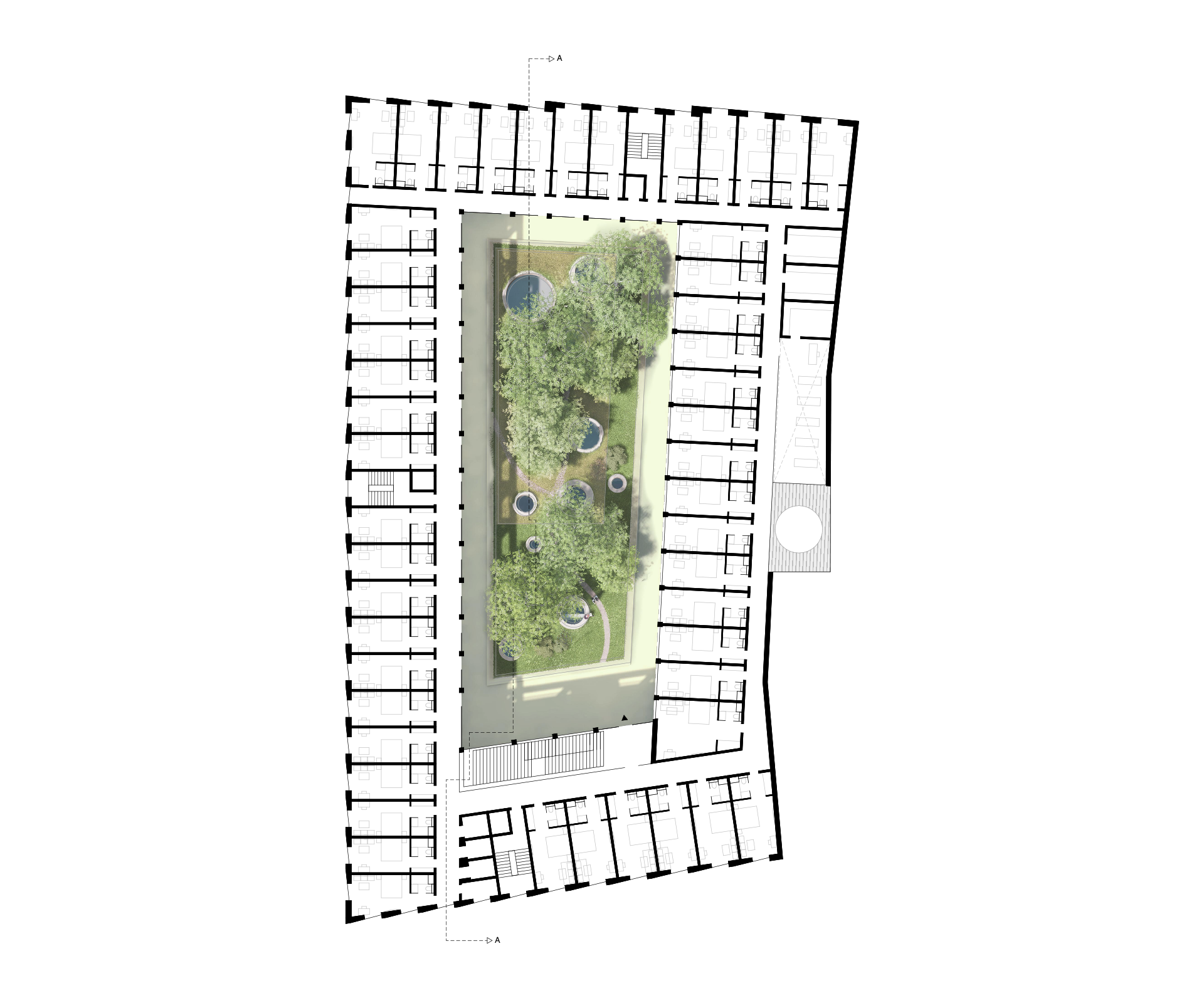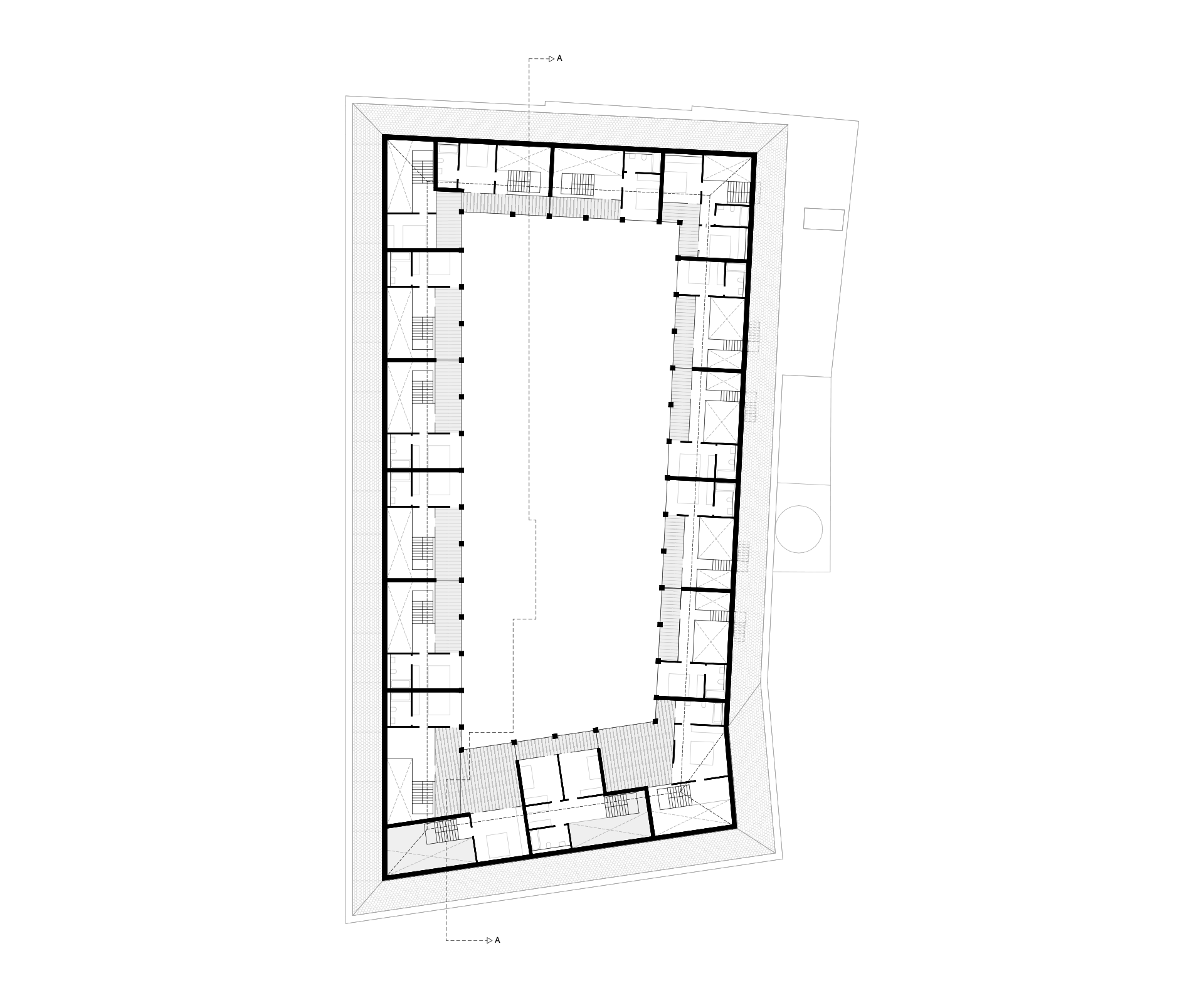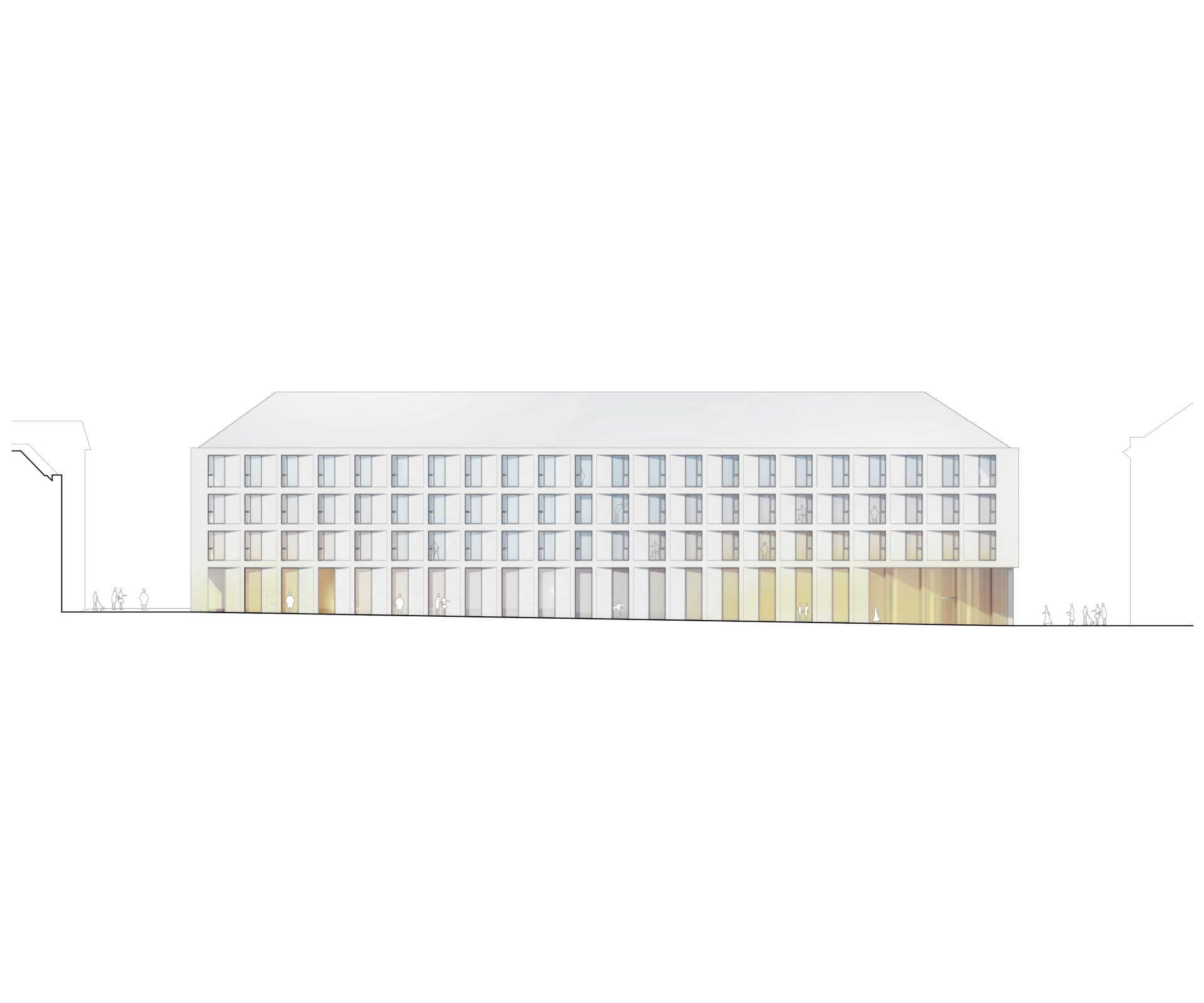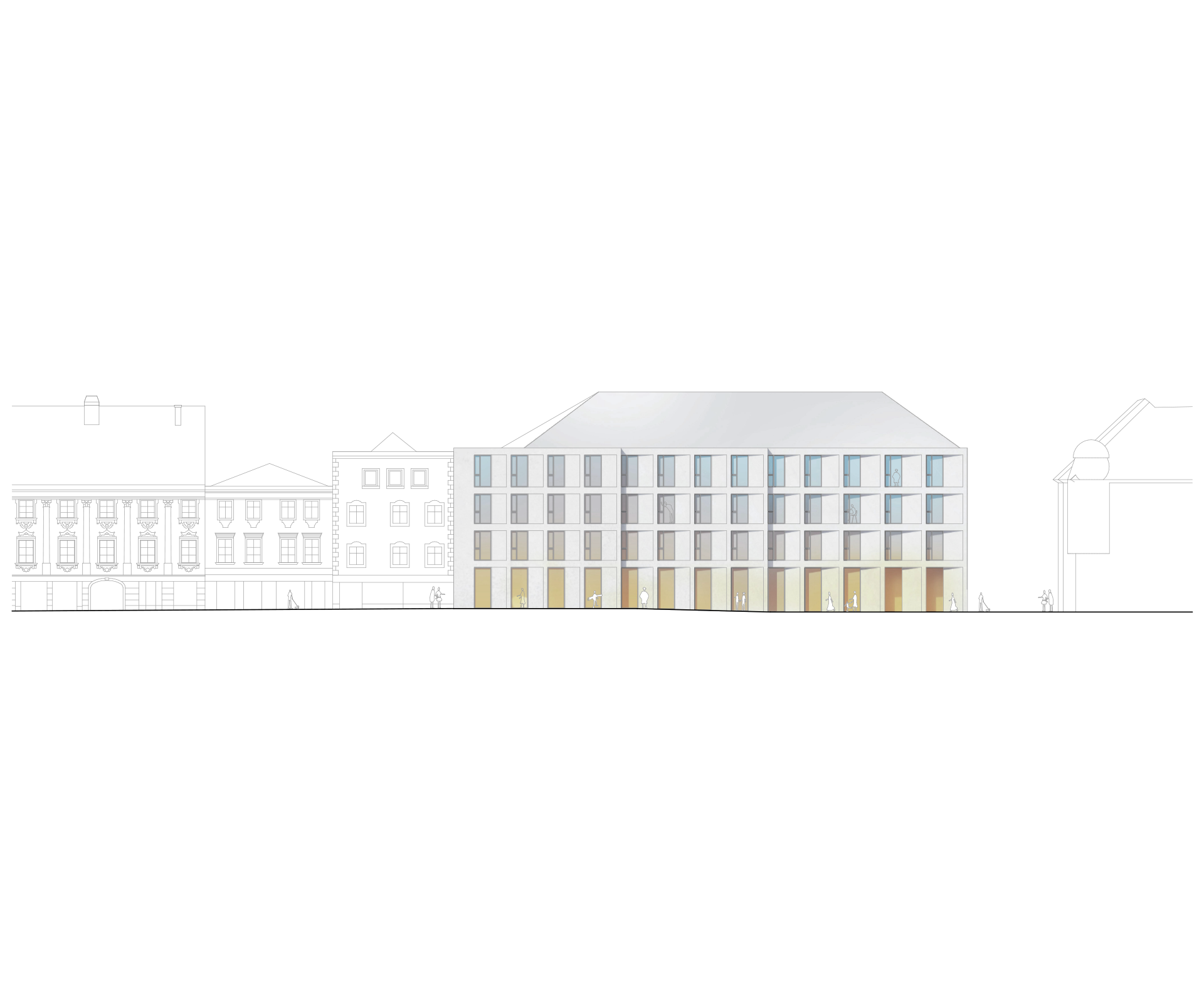In dialogue with World Heritage
In the heart of Krems's old town, a World Heritage Site, a new hotel building enters into a confident dialogue with its surroundings. Its inner courtyard takes on a character all its own as a green oasis.
In dialogue with World Heritage
- Programme
Hotel (100 rooms), 17 apartments, local shops, drugstore
- Size
8.887 m² GFA above ground
- Commissioning
Invited competition 2021, 1st prize
- Status
Follow-up project in planning
Contemporary architecture in dialogue with the world heritage of the city of Krems: View of Obere Landstraße (left) at the corner of Sparkassengasse (right).
The new hotel building in Krems is located at the intersection of two different urban areas—the Krems Old Town on Obere Landstraße, which is a World Heritage Site, and the increasingly heterogeneous environment of Sparkassenstraße and Spitalgasse, whose development dates back to the second half of the 20th century. The new building occupies this intersection with an architecture that dispenses with historicizing design features and instead confidently embeds itself in its surroundings in a contemporary yet sensitive manner.
The new hotel building (center of photo) blends harmoniously into the rooftop landscape of Krems's old town.
Dialogue with World Heritage
The new hotel is designed as a self-contained courtyard building that enters into dialogue with its surroundings, while its inner courtyard takes on its own character as a green oasis. The exterior facades of the building are deliberately kept solid in sandblasted reinforced concrete, in keeping with the massive historic buildings of Krems' old town – this materialization captures the genius loci more convincingly than a plastered facade with numerous metal sheets and few color nuances.
In keeping with the scale of the historic buildings, the building on Obere Landstraße is divided into three sections, marked by vertical facade breaks. The facades of these three building sections are slightly rotated in relation to each other to reflect the organic street layout of Obere Landstraße. For further differentiation, each building section has characteristic window openings, which are achieved by varying the angle of the conical window reveals.
In Sparkassengasse, the direction of the window reveals changes in the middle of the street, dividing the facade of Sparkassengasse into two sections in reference to the two existing buildings that are to be demolished.The roof of the building is proposed as a pitched roof with gray Eternit covering in order to harmoniously embed the new building into the historic fabric.
The entrance to the hotel opens onto Hafnerplatz (in the foreground), while Sparkassengasse (on the left) is enlivened by a bar in the hotel lobby.
Green inner courtyard
In contrast to the solid exterior facades, the facades of the green inner courtyard are filigree and transparent – here, the corridors and rooms of the hotel on the first and second floors surrounding the inner courtyard and the apartments above on the third floor communicate intensively with the central green space. On the first floor, the elevated courtyard can be accessed directly from the hotel corridors and rooms as an extended lounge area for guests.
Apartments
The apartments on the third floor have galleries under the sloping roofs on the fourth floor, which can be reached via internal staircases. Here there are spacious open areas facing the courtyard and one or two additional rooms or work areas. Optionally, loggias can also be incorporated into the living space on the third floor as open areas that can be accessed directly from the living room.
Courtyard typology
The chosen courtyard typology not only creates a self-contained, high-quality open space in the courtyard, but also offers organizational advantages. The ring-shaped access keeps distances short and adds communicative value for both the hotel and the apartments.
Hotel rooms and apartments face the green inner courtyard.








Site plan